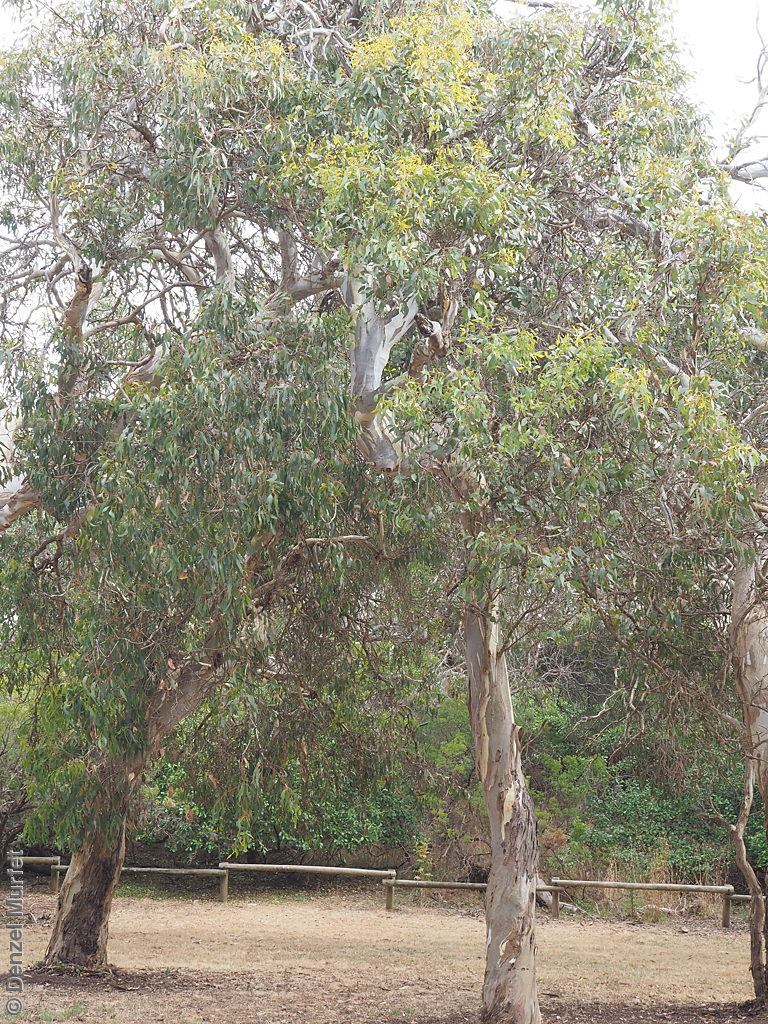
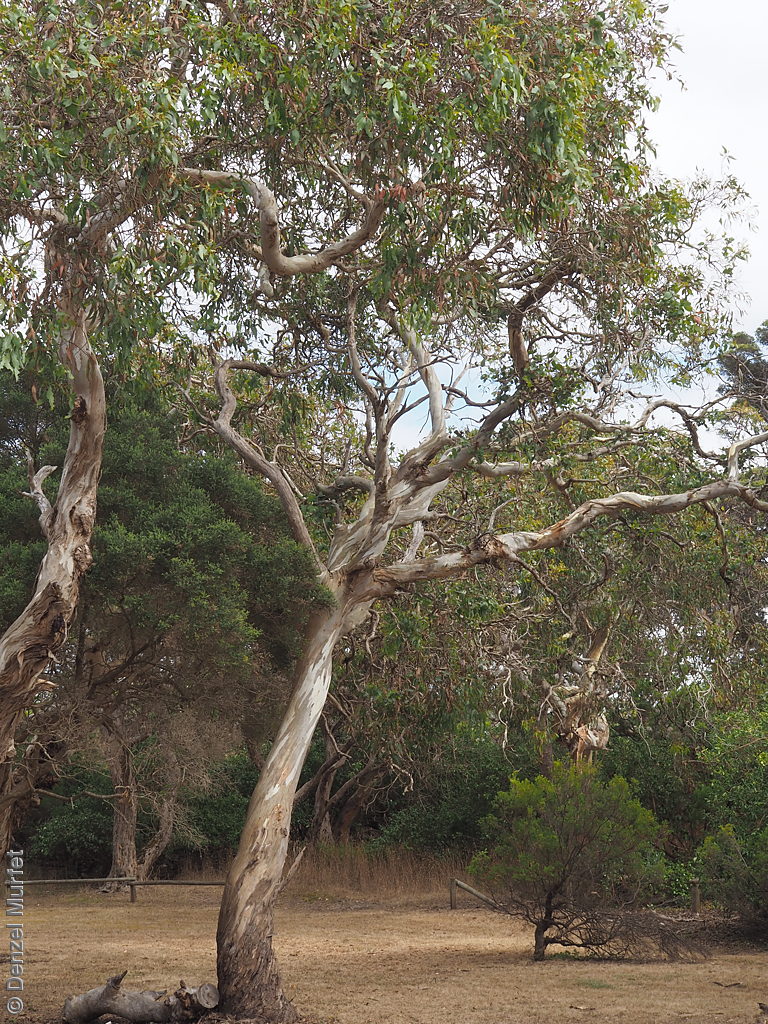

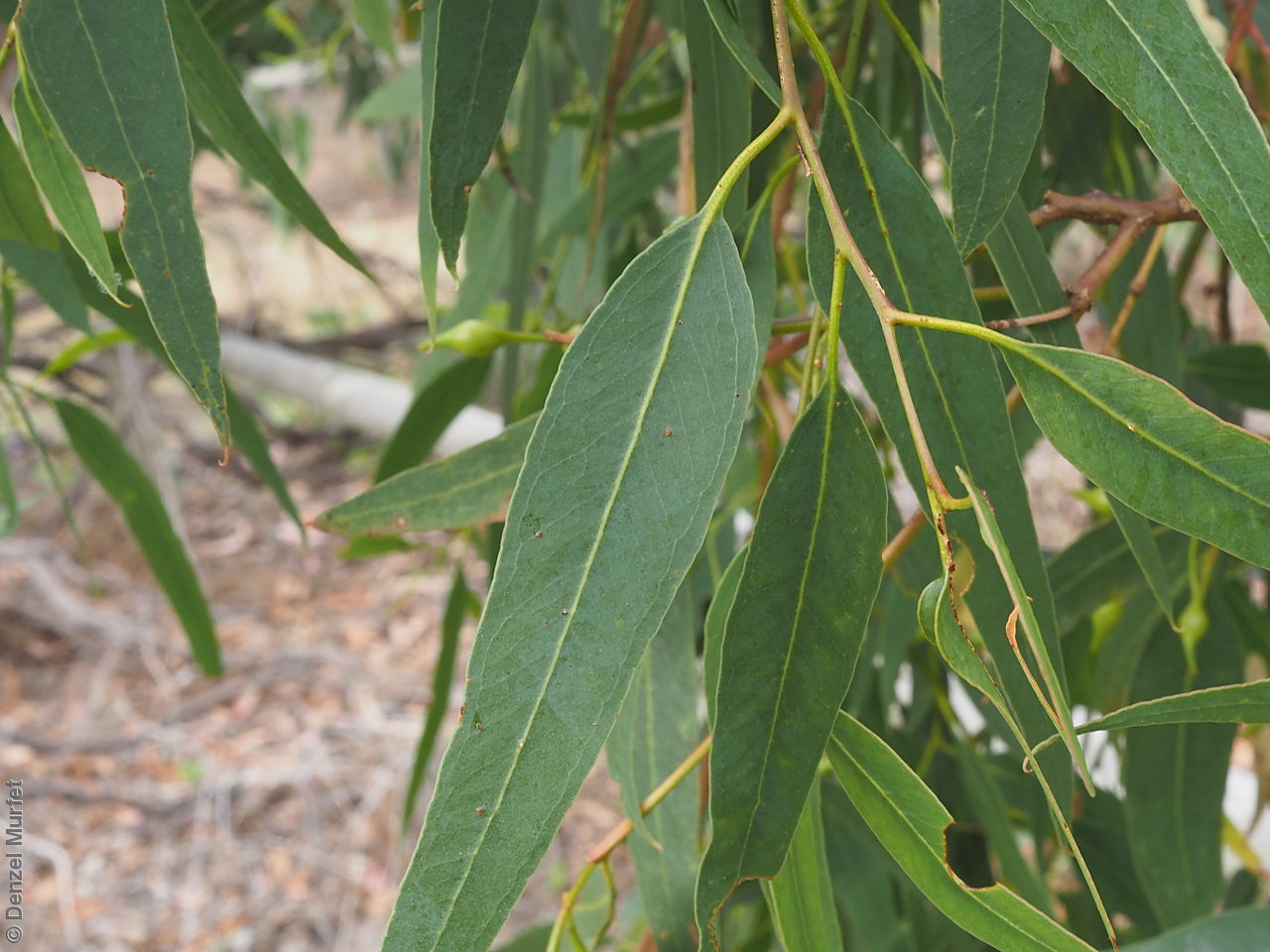

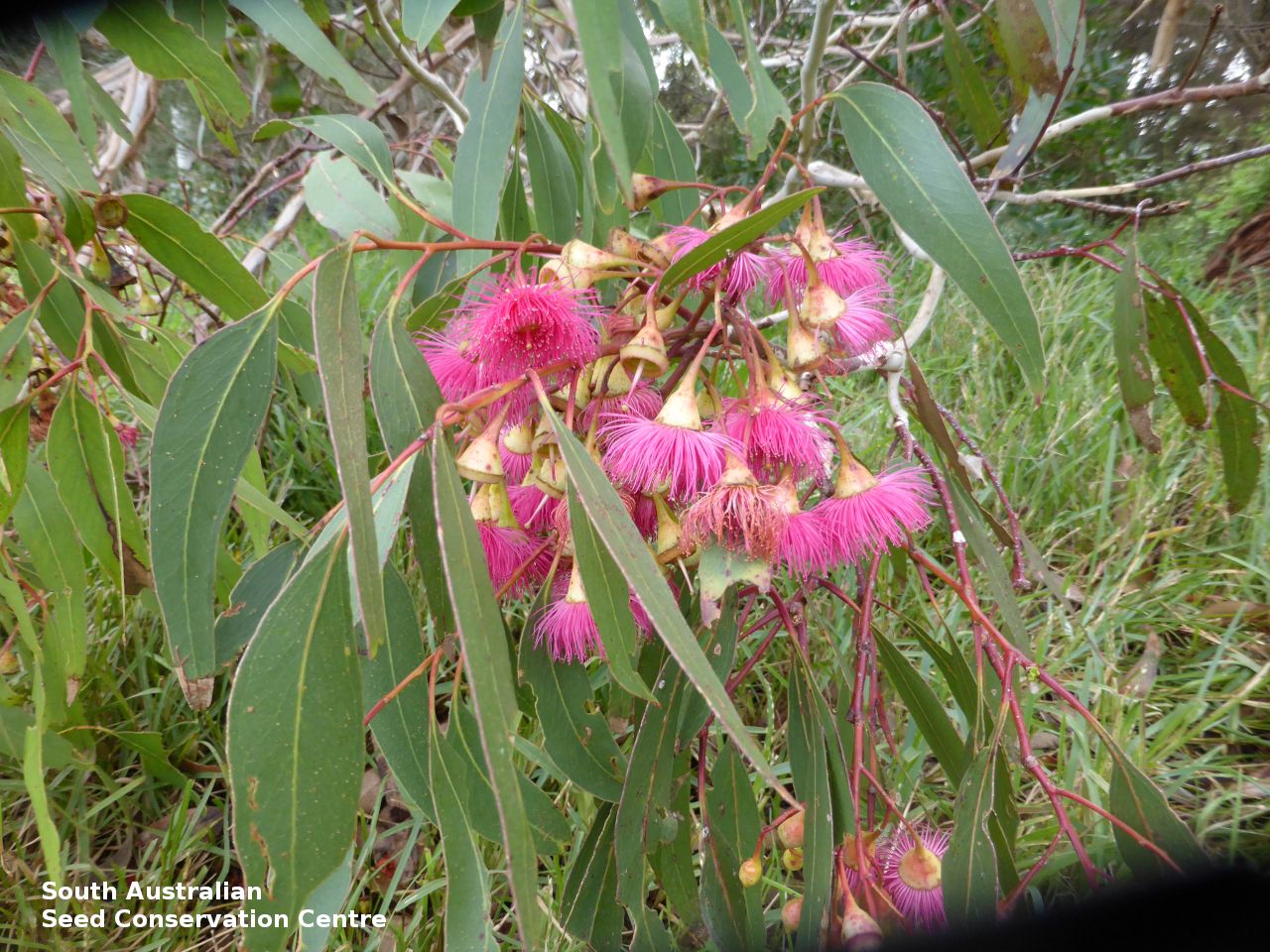
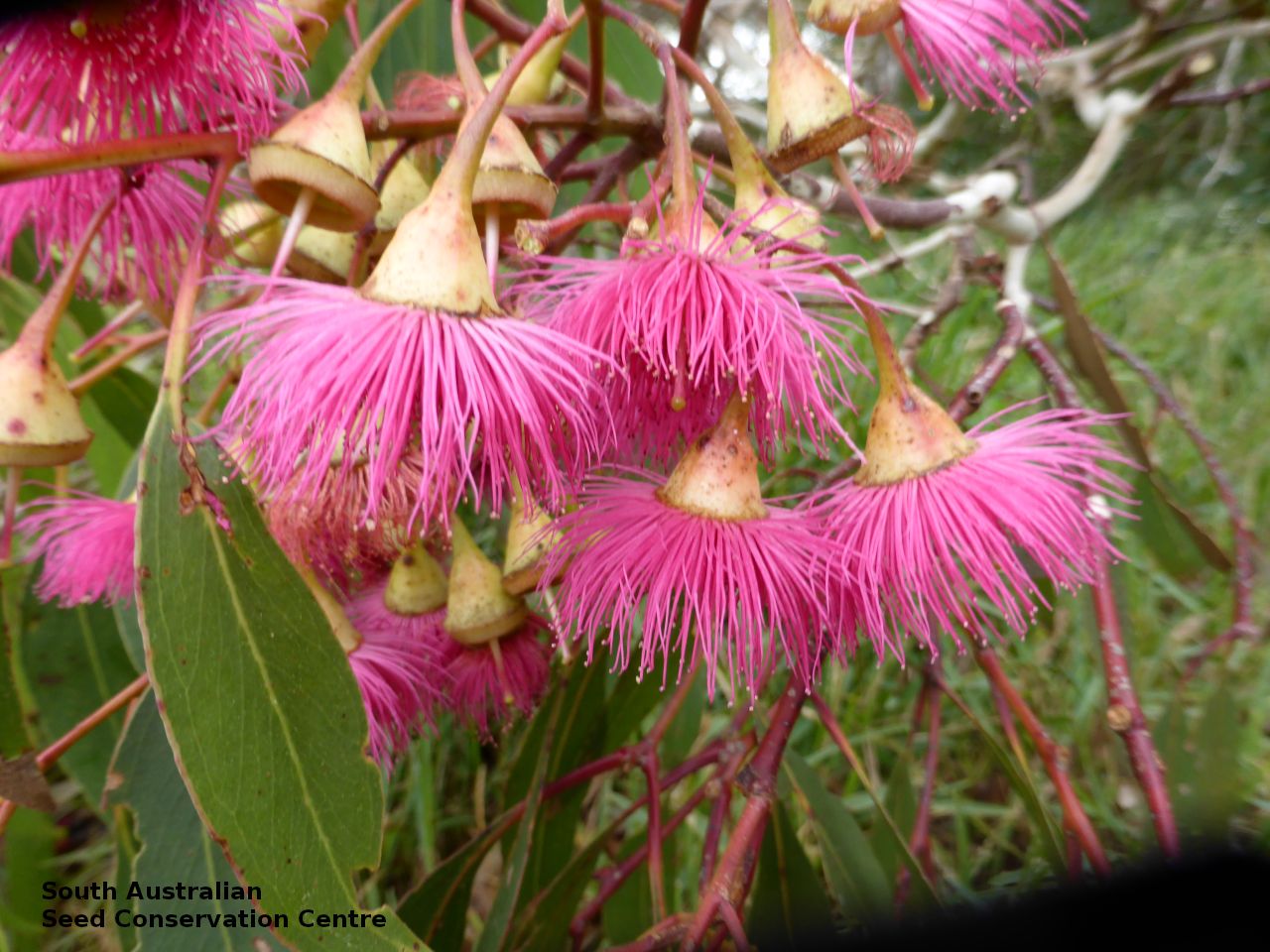
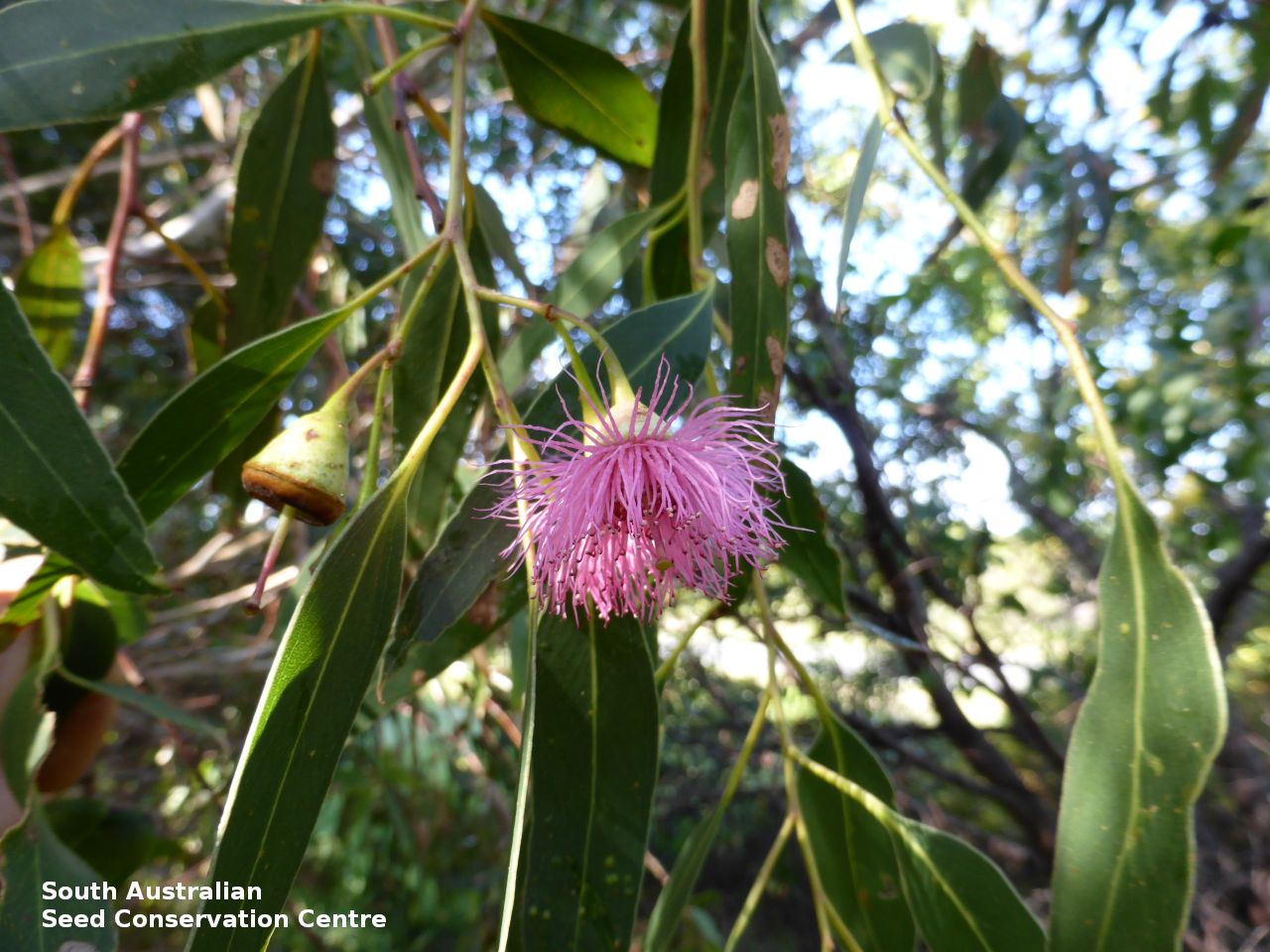
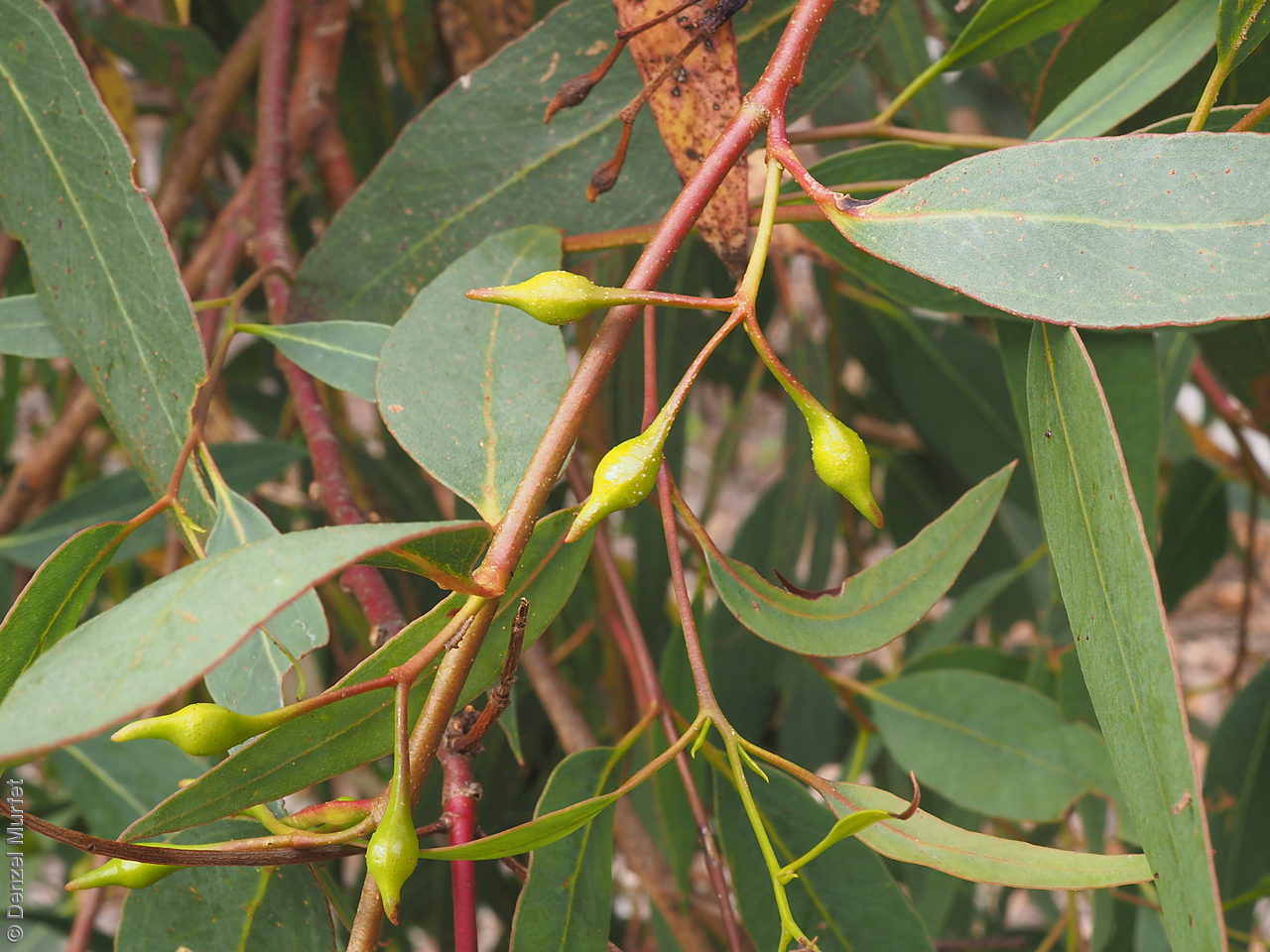
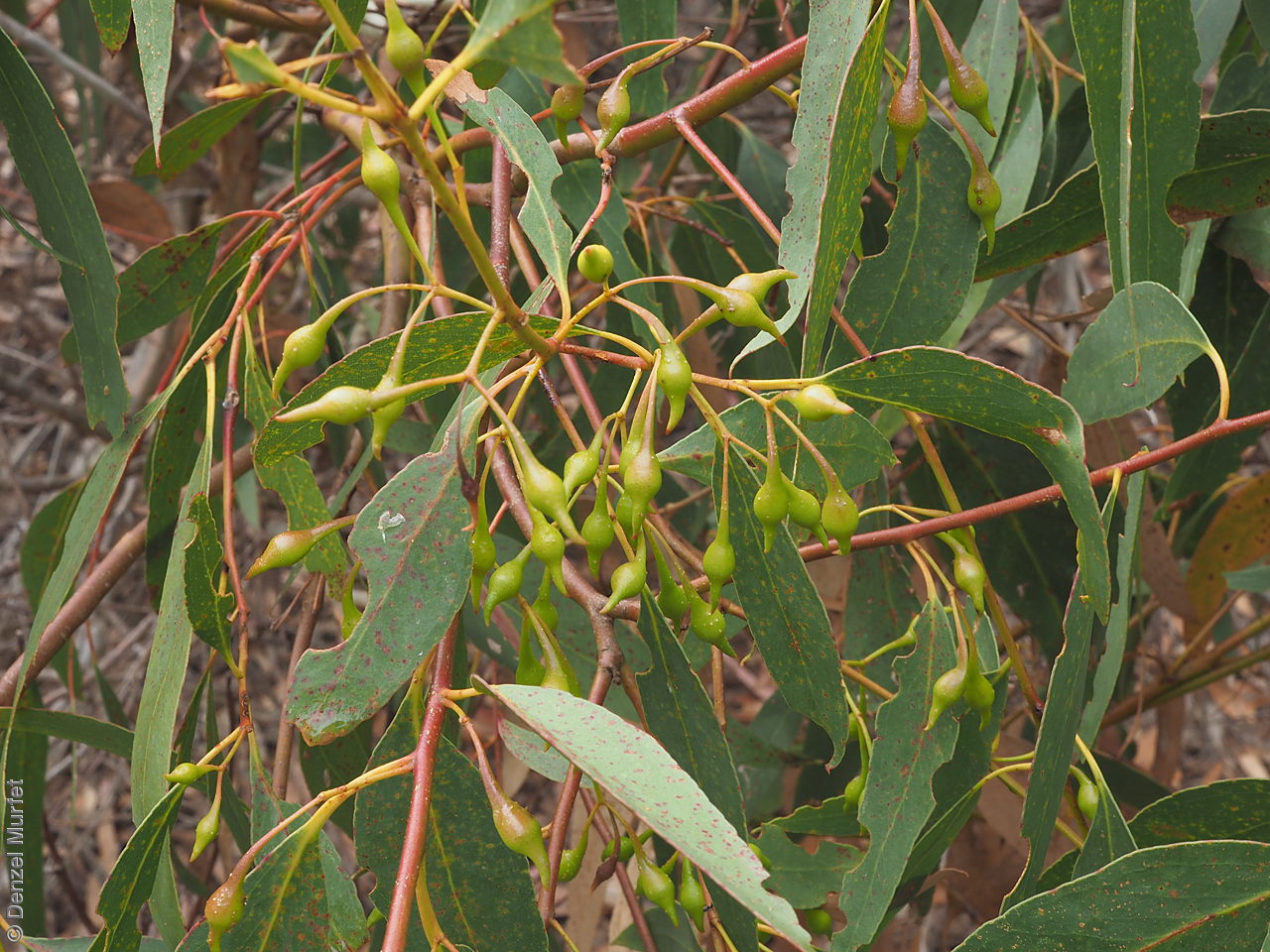
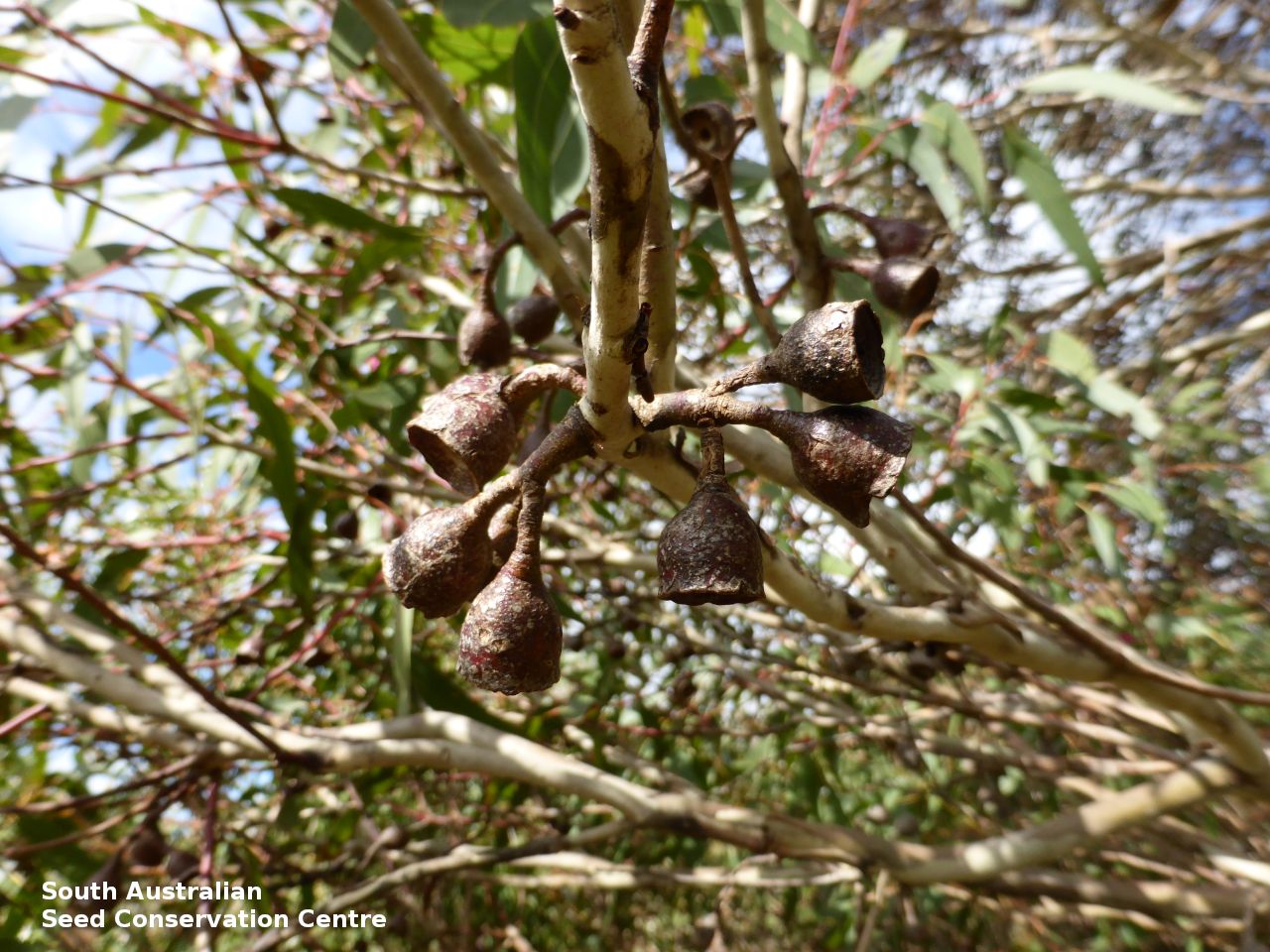


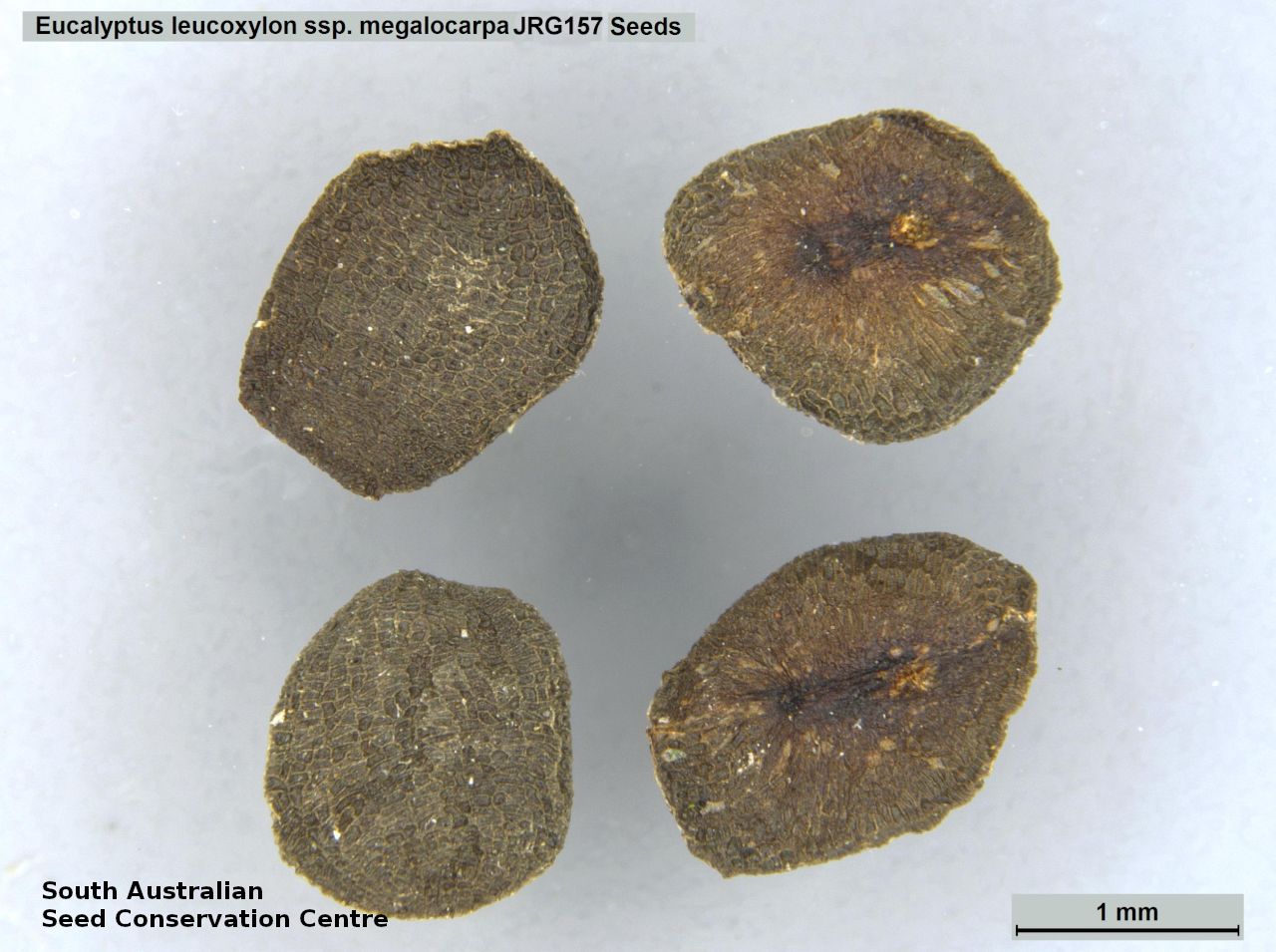


Botanical art
Prior names
Eucalyptus leucoxylon var. macrocarpa
Common names
Large-fruit South Australian Blue Gum
Large-fruit Blue Gum
Etymology
Eucalyptus from the Greek 'eu' meaning well and 'calyptos' meaning covered; alluding to the cap or lid which covers the stamens in the bud. Leucoxylon from the Greek 'leucos' meaning white and 'xylon' meaning wood; referring to the pale-coloured wood of the species. Megalocarpa from the Greek 'megalo' meaning big and c'arpos' meaning fruit; referring to the large fruits this subspecies compared to the other subspecies.
Distribution and status
Found in he lower South-east in South Australia, growing in coastal shrubland or low woodland on shallow sandy-loam to reddish clay-loam soils over limestone, often in slight depression. Also found in Victoria. Native. Rare in South Australia. Very rare in Victoria.
Herbarium region: South Eastern
NRM region: South East
AVH map: SA distribution map (external link)
Plant description
Single- or several-stemmed dense crowned tree to 12 m tall with mostly smooth yellowish to cream bark throughout, some plate-like loose bark on the lower trunk. Juvenile leaves cordate to ovate, dull, green to blue-green. Adult leaves to 190 mm long and 45 mm wide, lanceolate to broad-lanceolate, dull to slightly glossy, green. Flowers axillary in groups of 3 on long individual stalks. Buds to 18 mm long and 9 mm wide, ovoid, bud-cap cone-shaped, equal to or slightly shorter than the base. Flowers creamy-white to pink to red appearing in winter and spring. This subspecies is distinguished from the other four subspecies that occurs in South Australia by having non-waxy juvenile and adult features, relatively broad adult leaves long peduncles and pedicels and large, near-round to barrel-shaped or cylinder-shaped fruits. Fruits are near-round to barrel-shaped or cylinder-shaped fruits to 17 mm long and 15 mm wide, disc descending, valves 5 or 7 below the rim. Seeds are dark brown ovoid seed to 2 mm long and 1.5 mm wide, with reticulate surface. Seed embryo type is folded.
Seed collection and propagation
Collect seeds between January and December. Collect mature fruits that are dark and hard (difficult to break with a finger nail), with the valves un-open any time of year. Leave the fruits in a breathable container in a dry room for one to two weeks. This allows the valves on the fruit to open and release the seeds. Separate the seeds by placing all the materials into a bucket and shaking it to dislodge the seeds. Pass the material through a sieve to separate the unwanted material. The finer material will contain both seeds (soft) and frass (hard) usually distinguishable from each other but can be very similar in shape and colour. With finer sieves, the seeds can be separated from the frass but this is not essential for storage or propagation. Store the seeds with a desiccant such as dried silica beads or dry rice, in an air tight container in a cool and dry place. From one collection, the seed viability was high, at 95%. Seeds are non-dormant, viable seed should germinate readily.
| Location | No. of seeds (weight grams) | Number of plants | Date collected | Collection number Collection location | Date stored | % Viability | Storage temperature |
|---|---|---|---|---|---|---|---|
| BGA | 4,400 (3.83 g) | 20 | 9-Jan-2008 | TST349 South Eastern | 19-Sep-2008 | 95% | -18°C |
| BGA | 10,700 (6.94 g) | 13 | 1-Sep-2014 | JRG157 South Eastern | 1-Jan-2016 | 100% | -18°C |
Number of plants: This is the number of plants from which the seeds were collected.
Collection location: The Herbarium of South Australia's region name.
% Viability: Percentage of filled healthy seeds determined by a cut test or x-ray.